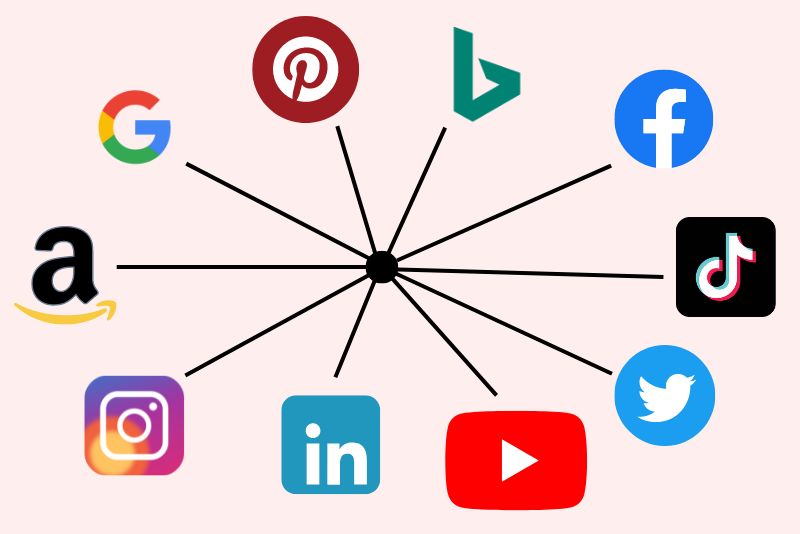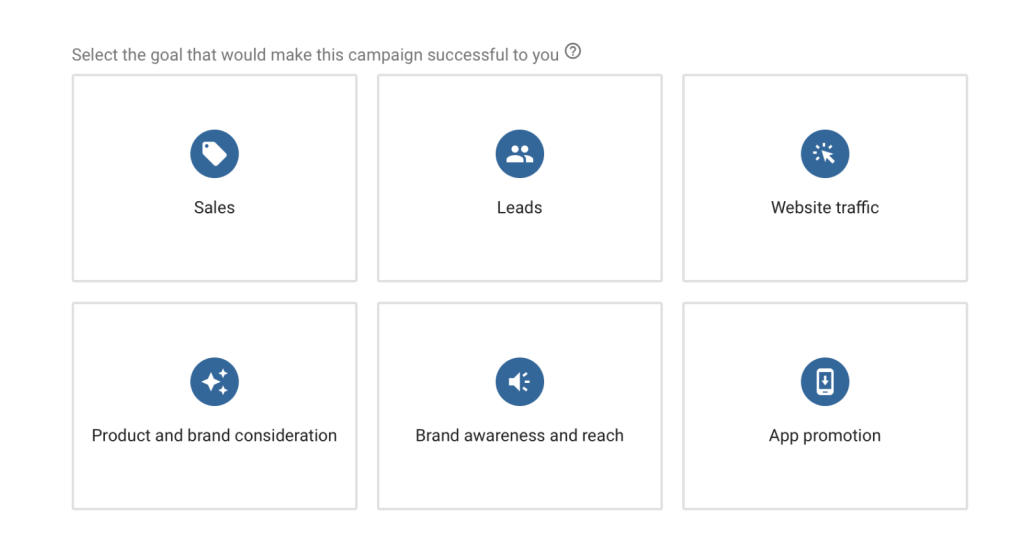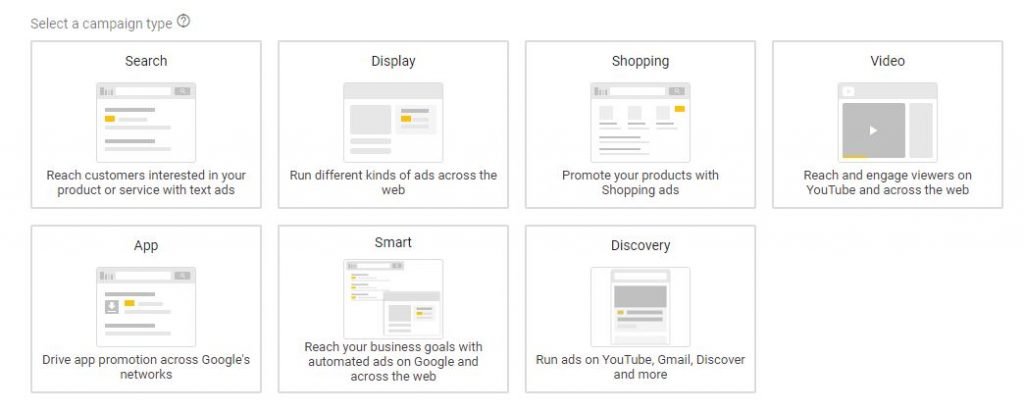It’s no secret that PPC marketing is a powerful tool, allowing businesses to pinpoint the right kinds of consumers and maximize their ROI. But if you are new to PPC (Pay-Per-Click) marketing, trying to understand how it all works can be frustrating and overwhelming.
I have been in the same boat. When I started with PPC marketing, trying to figure out all the technicalities on my own was intimidating and discouraging. Fortunately, it’s not as complicated as it seems!
After four years of creating PPC campaigns and running ads for companies, I’ve learned a few tricks of the trade. I am here to share my best practices with you so that you can get up and running quickly and start seeing results in no time.
This quick guide to PPC marketing will help you create a successful PPC strategy that delivers results. I’ll cover everything from keyword research and budgeting tips to bidding strategies and how to measure success.
What is PPC Marketing?
PPC stands for Pay Per Click, an online advertising model in which the advertiser pays for each clicks their ad receives. This means that advertisers only have to pay when someone clicks through and visits their website.
The ultimate goal of PPC is to drive customers to your website and generate conversions and sales. With the right strategy, PPC campaigns can efficiently increase targeted traffic and your company’s bottom line.
Best PPC Platforms

So the next question that’ll come to your mind is, which PPC platform should you use? The good news is that there are many options available – from search engines like Google Ads and Bing to social networks like Facebook and Instagram.
The key is selecting the right platform for your business needs. Each platform has different features and targeting capabilities, so it’s important to understand its benefits before making a decision.
For example, if you’re looking to target specific user demographics or reach global audiences, then Google Ads and Bing might be the best choice. However, if your goal is to engage customers with videos and content marketing, then social networks like Facebook and Instagram are more suitable.
Google Ads & Bing Ads
Google Ads and Bing Ads are two of the most popular PPC platforms and offer some of the best targeting capabilities. They both target users based on keywords, location, demographics (such as age and gender), or interests.
Both Google Ads and Bing Ads use an auction system to determine who gets ad placements and how much they pay for them. This means that the more competitive a keyword is, the higher you’ll have to bid in order to get your ad seen by potential customers.
Meta Ads (Facebook Ads & Instagram Ads)
Facebook and Instagram are two of the most popular social media marketing platforms, allowing businesses to target users based on their interests, demographics, behaviors, and more.
Facebook Ads allows you to create highly targeted campaigns with a variety of ad types, such as video, photo, carousel, and story ads. Instagram Ads also offers many options for targeting users and creating visually appealing ads.
Both platforms aim to engage customers with relevant content that engages and resonates with them – something that can be difficult to do on search engines like Google and Bing.
In addition, you can also run ads on other social platforms like TikTok (not available in India), Twitter, LinkedIn, and Reddit based on your audience.
Benefits of PPC Marketing
1. Increased Visibility – PPC can be a great way to increase your visibility online, as it allows you to quickly reach new customers and bring them to your website.
2. Targeted Ads – With the right targeting options, you can deliver highly targeted ads that are more likely to convert into sales or leads.
3. Cost-Effective – PPC can be a cost-effective way to generate leads and sales, as you only pay for clicks.
4. Quick Results – PPC campaigns can produce results quickly, allowing you to test different strategies and optimize them for better performance.
5. Measurable Results – With the help of analytics tools, you can measure the success of your PPC campaigns and make well-informed decisions.
Tips To Create an Effective PPC Strategy
When creating your PPC campaign, there are several things to consider, such as budgeting, choosing the right keywords, setting up ad groups, and optimizing for conversions.
Keyword Research & Targeting
Keyword research is the process of identifying and analyzing words and phrases that people use when they search online. By doing this, you can create effective ads targeting users actively looking for your product or service.
To start, brainstorm a list of keywords that you think best describe your business and what it offers. Make sure to include a mix of broad, generic terms and more specific phrases related to your offer.
Once you have a list of potential keywords, do some research on each one. Use tools like Google AdWords Keyword Planner or SEMrush to identify search volumes and competition levels for your chosen keywords. This will help you determine which ones are worth targeting in your PPC campaigns.
Now that you have a list of profitable keywords, it’s time to create your ad groups and ads.
Ad Group & Ad Creation
Ad groups are a way of organizing your campaigns into smaller, more manageable sections. Each ad group should have its own set of keywords and ads tailored to target a specific audience.
For example, if you were selling shoes, you could create an ad group for running shoes and another for dress shoes. Then create ads that target each of these groups specifically.
Once you’ve created your ad groups, it’s time to start creating ads. Start by writing a compelling headline that will grab users’ attention. Make sure to include keywords in your headlines as much as possible, as this will help show Google that your ad is relevant to the search query.
Write description text for your ads that is both informative and engaging. Include a call-to-action that encourages users to click on the ad and visit your website. Once you’ve created all of your ads, it’s time to optimize them for better performance.
Budgeting & Optimization
Before you start your PPC campaign, it’s important to set a budget that is appropriate for your goals. This will help you manage costs and ensure that you don’t exceed your spending limit.
When it comes to PPC budgets, always start small and test different strategies before increasing your budget. This allows you to make sure that your campaigns are performing well before investing more money in them. You can customize bids for certain keyword groups depending on your budget and goals.
Once you’ve set up your campaigns and budget, it’s time to start optimizing them for better performance.
This involves testing different elements of your campaigns, such as ad text, targeting options, landing pages, and more. By testing these different elements, you can see which ones work best for generating leads or sales and adjust your campaigns accordingly.
By following these steps, you can create an effective PPC strategy that will help you reach your goals and maximize the ROI of your campaigns.
Now that you know the basics of PPC, it’s time to start planning your campaign!
How to Build a PPC Campaign
Now, this process is different for every PPC platform, but there are a few common steps that you can use to help guide your planning process.
1. Define Your Goals

Before you start your campaign, it’s important to define what success looks like for you. Are you looking to generate leads? Increase website traffic? Make more sales?
You may want to measure brand awareness or track conversions, so having a clear objective in mind is important.
2. Campaign Types

Once you know your goals, the next step is to decide what type of campaign you want to run. Google Ads and Bing Ads both offer several options, including search, display, video, and shopping ads.
Search – Search ads appear at the top of search results pages and are triggered by keywords.
Display – Display ads appear on websites, blogs, and apps that are related to your target audience or products.
Video – Video ads can be used to engage viewers with interactive videos that drive traffic to your website or landing page.
Shopping – Shopping ads showcase product images, prices, and descriptions on Google’s Shopping page.
Facebook Ads and Instagram Ads offer a variety of ad types, such as carousel ads and story ads.
3. Keywords & Targeting
The keywords you choose are the foundation of your PPC campaign, so make sure to take the time to research and select the right ones.
Once you have a list of keywords, you’ll need to decide how to target them. Both Google Ads and Bing Ads allow you to target users based on their location, demographics (age, gender), and interests.
Keyword type is another important factor to consider, as there are three different types: broad match, phrase match, and exact match.
Broad match keywords are the most general and will trigger your ad when someone uses any variation of the keyword. On the other hand, phrase and exact match keywords are more specific and will only show your ad when someone searches for that exact phrase.
4. Budgets & Bidding
Your budget will determine how many clicks and conversions your campaign can generate, so it’s important to set a realistic budget that is aligned with your goals.
Once you have a budget in mind, the next step is to decide how much you are willing to pay for each click (your bid).
Google Ads and Bing Ads offer several bidding options, such as CPC (cost per click), CPM (cost per mile), and CPA (cost per acquisition).
5. Testing & Optimization
Once your campaign is live, tracking its performance and adjusting your settings is important.
You can use analytics tools to track your campaign’s performance and see how much you are spending, how many clicks you are getting, and how many conversions.
By testing different strategies and optimizing your campaigns for better performance, you will be able to get the most out of your PPC budget.
Best PPC Tools and Software
In order to stay on top of your PPC campaigns, you’ll need the right tools and software. There are a few different tools that can help you manage and optimize your campaigns with ease.
Google Adwords is one of the most popular platforms for managing PPC campaigns. It provides detailed analytics and reporting to help you track performance and optimize your campaigns.
SEMrush is another great tool for PPC management. It provides keyword research, competitor analysis, and other features to help you stay ahead of the competition and maximize your ROI.
Ahrefs is also an excellent tool for PPC management. It provides keyword research, analytics, and other features to help you improve your campaigns. You can also spy on your competitors’ campaigns and use their insights to refine your own strategy.
These are just a few of the many tools available for managing PPC campaigns. By using these tools, you can stay on top of your campaigns and make sure that they’re performing optimally.
Conclusion
Creating an effective PPC strategy requires a lot of planning, research, and testing. By following the steps outlined in this guide, you can create a successful campaign that will reach your goals and maximize the ROI of your PPC efforts.
Start by doing research into keywords, ad groups, and ads to create a strong foundation for your campaign.
Set up an appropriate budget for your campaigns and optimize them for better performance by testing different elements such as ad text, targeting options, landing pages, and more. Lastly, use the right tools and software to track your campaigns and stay ahead of your competition.
By following these steps, you can create an effective PPC strategy that will help you reach your goals.

